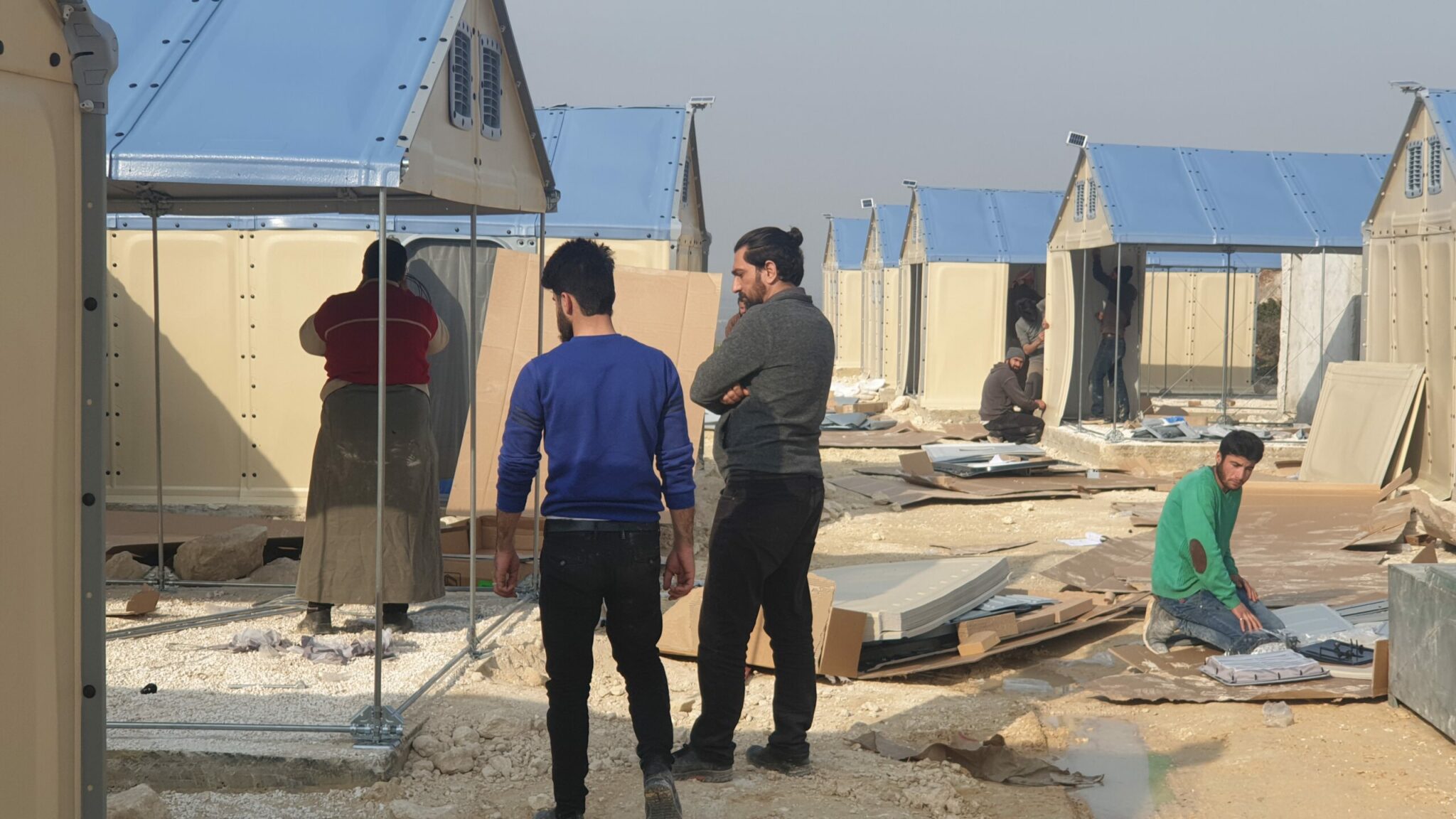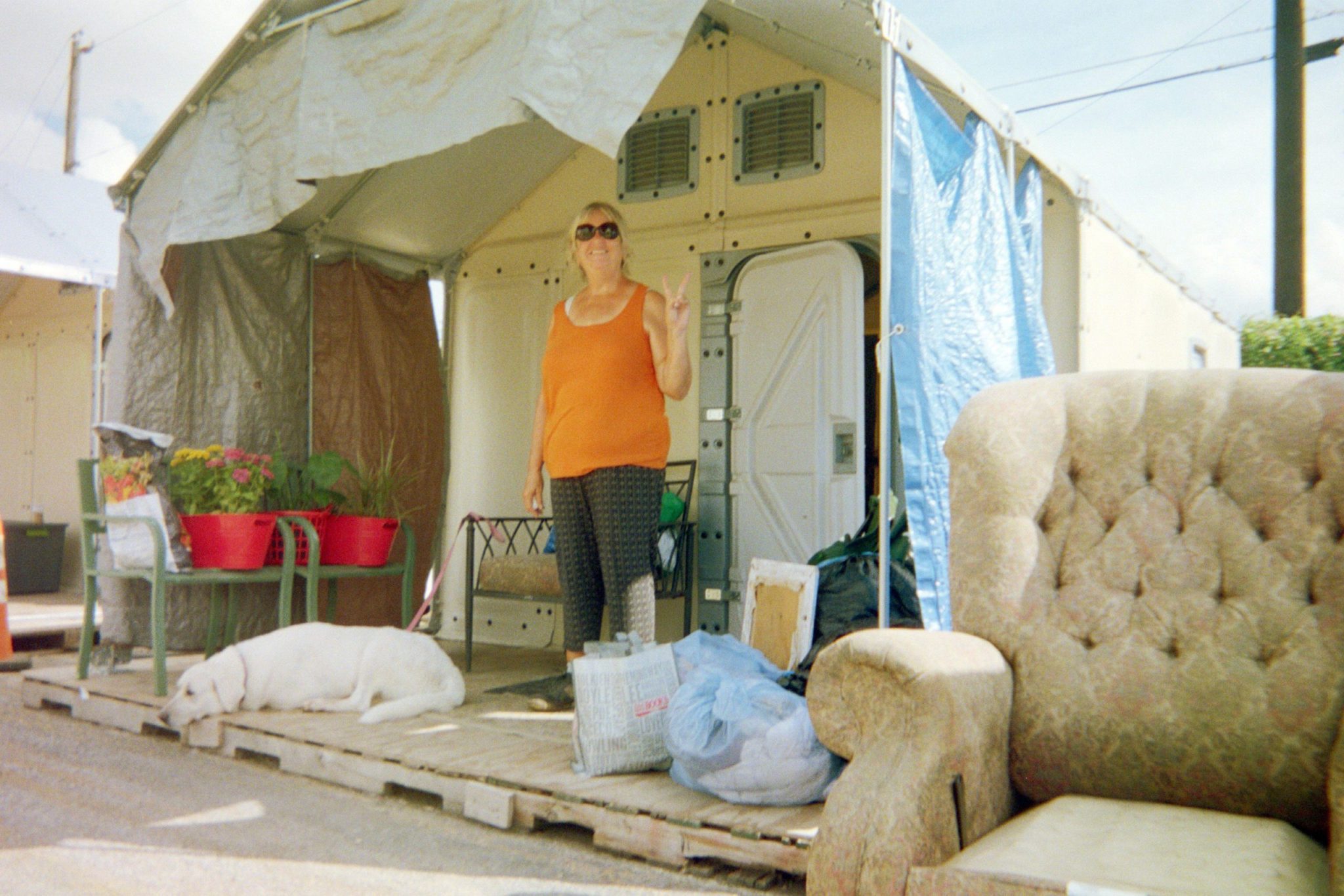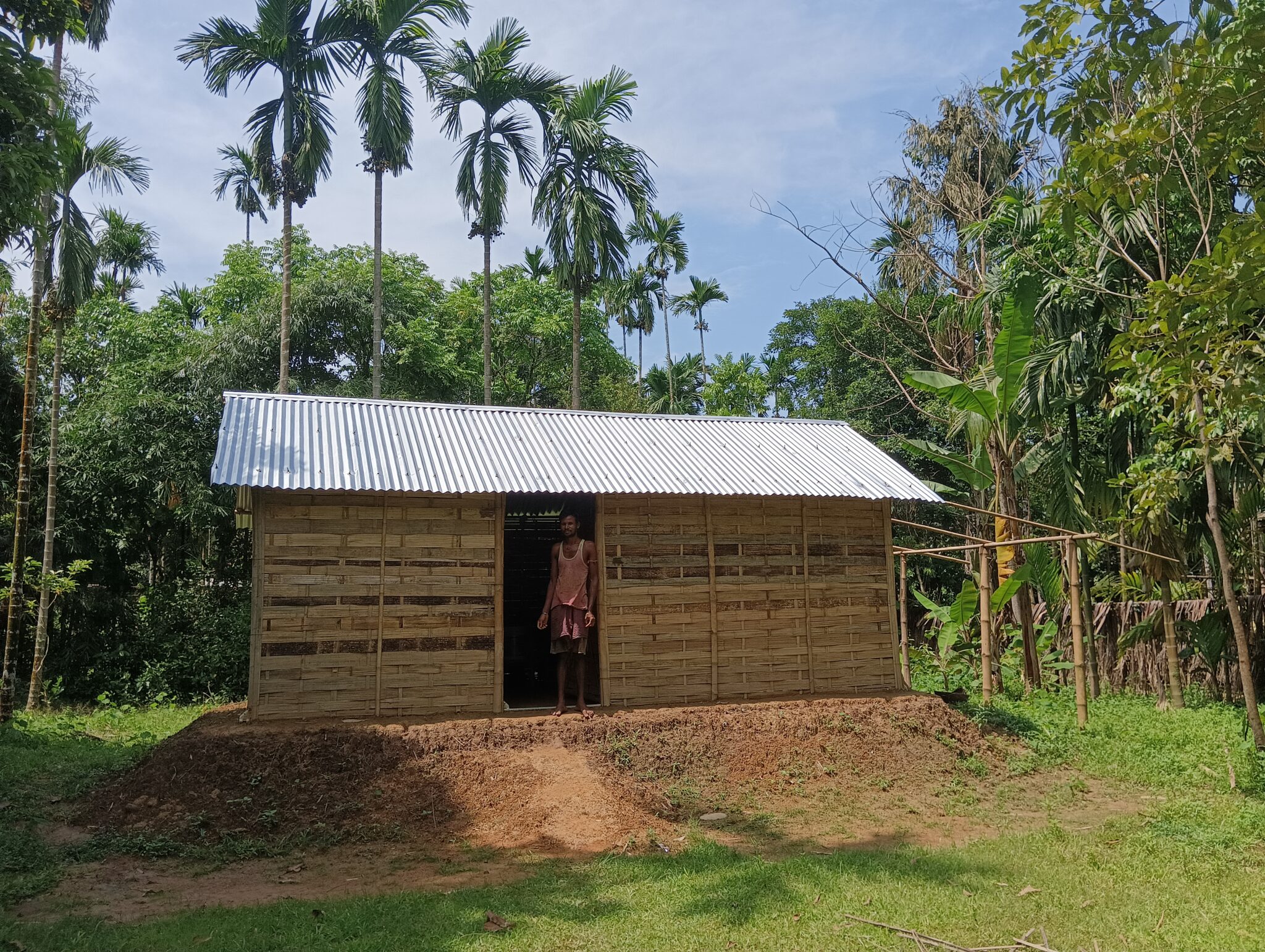A humanitarian is not a single profession, rather a diverse fabric of people with unique skills and perspectives, coming together with the common goal of helping people. On World Humanitarian Day, we celebrate the work of humanitarians around the world. The professional practitioners, volunteers and the people affected by conflict or disaster – who commit their expertise, abilities and talents, many putting their safety at risk. This year, the humanitarian community recognises that humanitarian action takes a village, and we talked to three humanitarians, diverse in their backgrounds, and experiences across cultures, climates and contexts.
Paul Schrijen
Architect, Better Shelter
A growing humanitarian-focused architect, whose experience extends from his studies in emergency architecture, to fieldwork in Greece, and currently to Better Shelter, where he works alongside the Product Team to develop innovative ways to shelter our most vulnerable populations in displacement.
“One of the most prevalent feelings from that time is how easily the residents welcome you in their midst and make you feel part of their community.”
Paul Schrijen
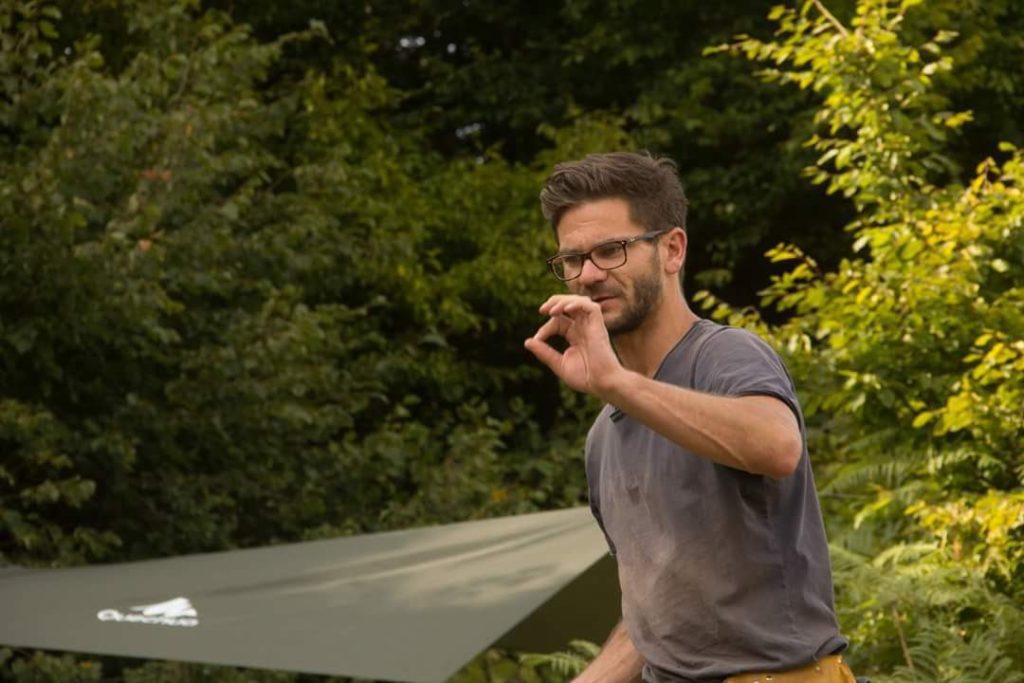
What is a standout memory for you in your work as a humanitarian?
One of the most prevalent feelings from that time is how easily the residents welcome you in their midst and make you feel part of their community. They were so ready to take responsibility not just for me as a newcomer but also for each other and the whole camp. They all want to do something useful with their time and learn something as well. They are probably the most hard working people I have ever worked with despite the fact that they are volunteers.
“Over time you get to know a few families of team members, you get to know their children, they start to know you and very quickly it starts to feel like you are part of a village.”
How have you and your humanitarian field partners and local communities supported each other when on a mission?
I think during that time the contact I had with other organisations and even with my coordinator colleagues was quite limited. We had our own workshop in the camp, started the day with some coffee together, had lunch together and cleaned up after the day together. We went for swims, did bbqs and parties and worked our asses off together. In terms of supporting each other I have to say that although you didn’t bother them with anything when it was possible, because they have enough to deal with already, I did feel very much supported by them. Most of them just by being there for each other making everybody feel part of a family and in some cases their families help as well. Over time you get to know a few families of team members, you get to know their children, they start to know you and very quickly it starts to feel like you are part of a village.

Abdullah Alsayed Omar
Project Programme Coordinator, WATAN
At WATAN, Abdullah has coordinated site development projects in colossal numbers. Two weeks ago, WATAN achieved the reach of over 1,500 families across five IDP camps in northwest Syria, providing them infrastructure support, including paving and gravelling roads, solar system installations and sewage and drainage networks. In 2020, we worked with WATAN in the Harem District in Idlib, Syria, where 500 RHUs were installed as temporary shelters for internally displaced families.
“I was proud to be one of this great team supporting the vulnerable people and providing the required assistance in those cases .”
What is a standout memory for you in your work as a humanitarian?
In 2016, during the biggest evacuated waves from Aleppo due to the clashing and heavy bombing on the civilians, the field teams prepared themselves to respond to those waves and provide core required assistance. Teams were receiving calls at night to go and respond, and many people were homeless. Public buildings, schools and mosques suffered, and in addition, the weather condition was so bad. During this crisis the teams were able to reach more than 5,000 families in one week and provide emergency core relief items and winter assistance to them, I was proud to be one of this great team supporting the vulnerable people and providing the required assistance in those cases.
I worked in the field in northwest Syria for many years, one day in 2015, I was conducting the assessment and met a girl, 17 years old, and who was blind. I tried to provide support for her and her family as much as I could. She was dreaming to resume her education while the schools closed and the displaced people were in the classrooms after they ran away as a result of the heavy bombing of their villages. Her only wish to become a teacher, the education situation at that time was a disaster. I feel bad because I couldn’t do anything for her. Still, at this moment the Syrian children are suffering from a lack of education services.
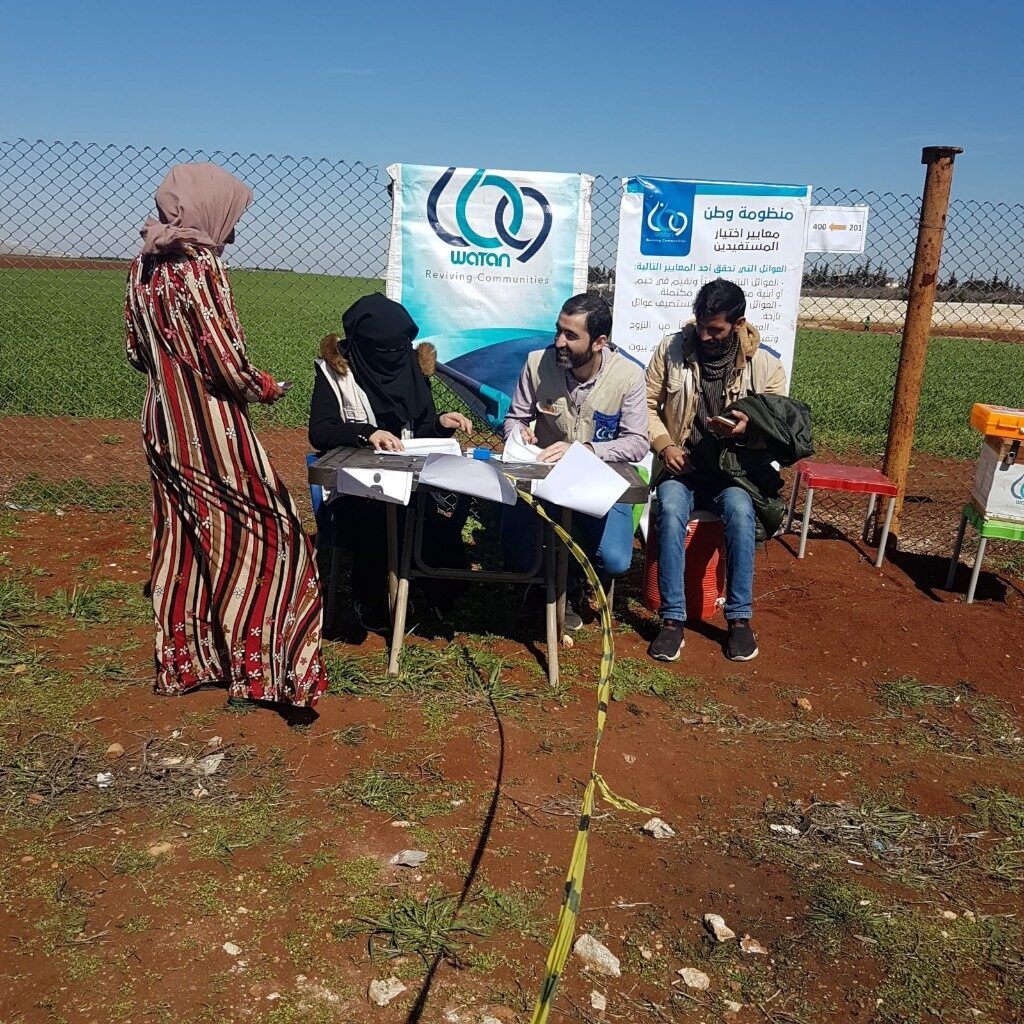
Abdullah, pictured third from the left, works at WATAN as Project Programme Coordinator. ©Abdullah Alsayed Omar
“Emphasis on the importance of teamwork to the success of a mission and reaching the main goal.”
How have you and your humanitarian field partners and local communities supported each other when on a mission?
To keep the humanitarian principles in our priority and keep an eye on them. enhance the team’s collaboration, by supporting and motivating them to reach the most vulnerable people. Emphasis on the importance of teamwork to the success of a mission and reaching the main goal, consulting with all team members broadly when collecting necessary information or problem-solving, in addition, encouraging all partners in the decision-making process.

Gautam Thakor
Site Engineer, SEEDS
With the effects of climate-related emergencies becoming more frequent and intensified, SEEDS has been at the forefront in responding with urgency across India. Gautam has culminated years of experience in NGOs as an engineer and construction manager, now currently working in SEEDS’ flood response in Assam, in the northeast of India. We have been working with SEEDS since we launched the RHU Structure in 2020, helping to build resilience and capacity in local communities across India.
“There was no road left for us to go to the place where we had to build temporary shelters, we used to reach their house through mountain walks and hiking.”
What is a standout memory for you in your work as a humanitarian?
As a civil engineer and working with SEEDS, I have lots of experience and I had a chance to help people who really need our help like shelters, food, clothes and other support. I want to share an experience, in response to the recently occurred disaster in Ramgarh, Uttarakhand 2021, we had made 20 temporary shelters for those needy families. There, when I went with our SEEDS team, there was no road left for us to go to the place where we had to build temporary shelters, we used to reach their house through mountain walks and hiking.
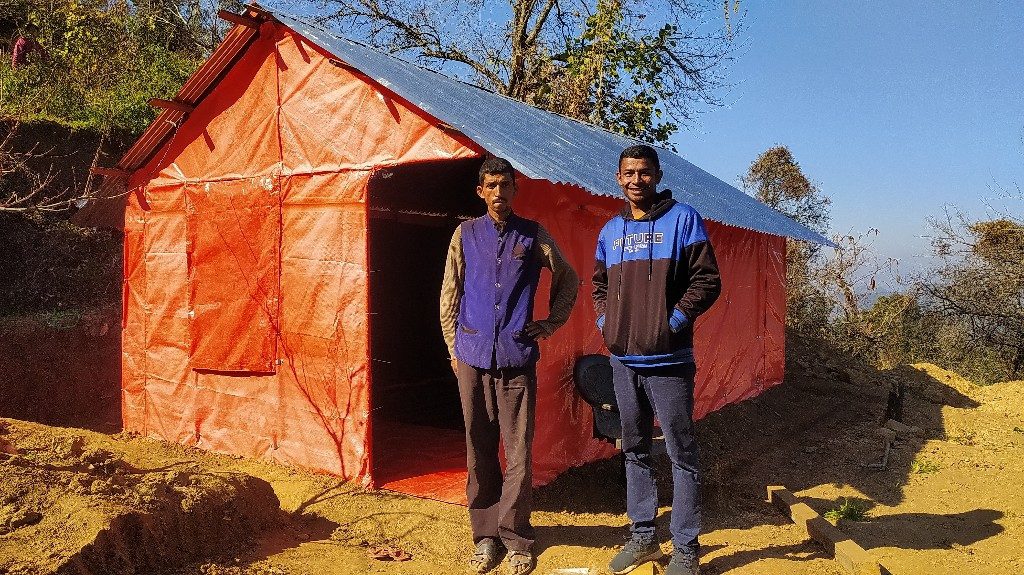
“I still remember that day when we built our five shelters and handed them over. Then I was very, very happy to see the happiness on their faces.”
How have you and your humanitarian field partners and local communities supported each other when on a mission?
The people there also supported us a lot. I still remember that day when we built our 5 shelters and handed over to them, then I was very very happy to see the happiness on their faces (especially children’s and their parents) and they were thanking us from the heart. This is the best experience of my life. Let me show you some photos of there. I would like to say thank you to SEEDS and Better Shelter for giving me this opportunity to serve the community.
We, here at Better Shelter are grateful to all our partners, whether on the field building shelters, or advocating for the rights of displaced people, or researching ways to innovate design, or developing programmes in camps, rebuilding education, providing health care, ensuring protection, and to the many others doing critical work. We celebrate your work and stand in solidarity with you.

